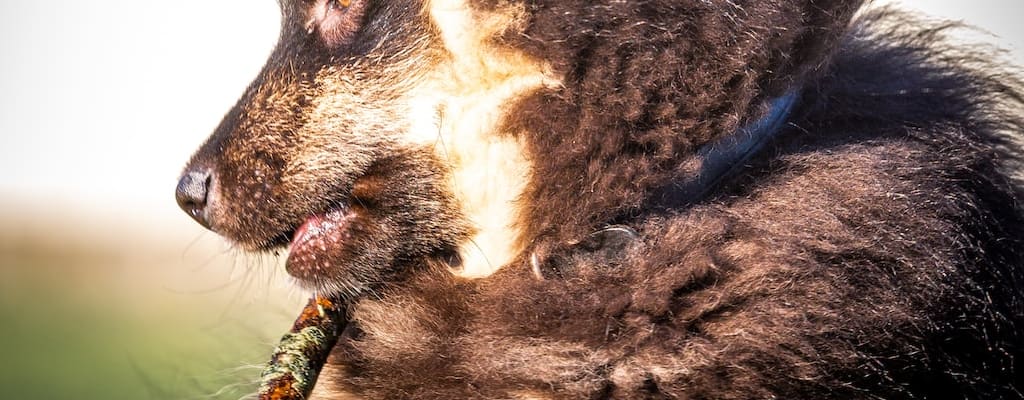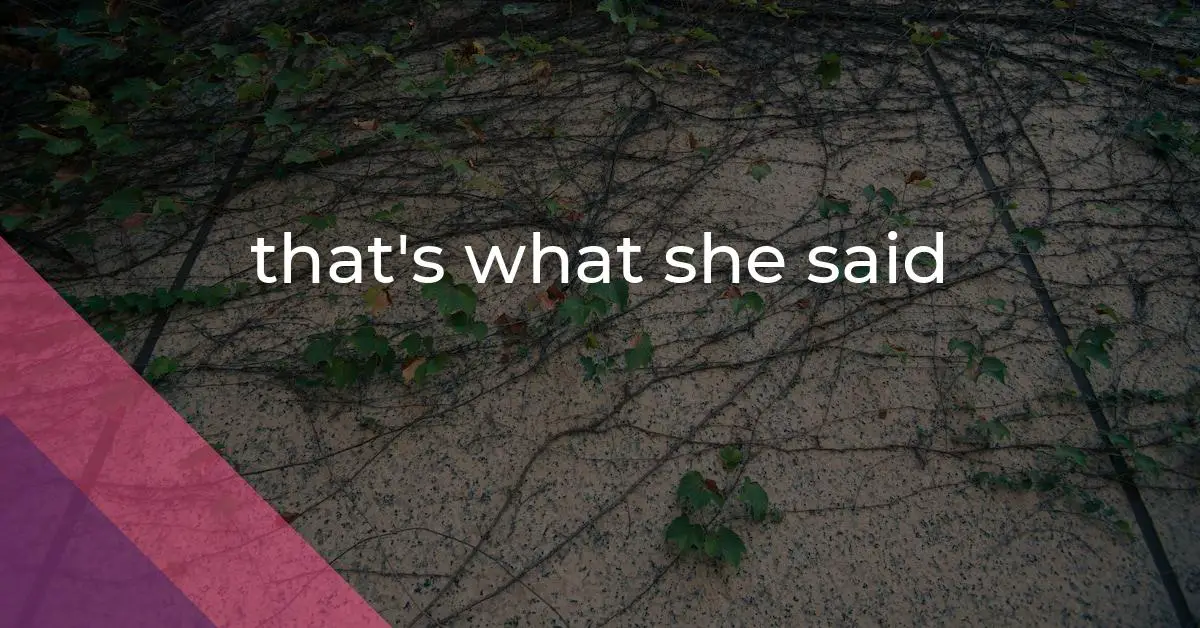that’s what she said: Idiom Meaning and Origin
What does ‘that's what she said’ mean?
The idiom "that's what she said" is a humorous phrase used to draw attention to statements that can be interpreted with a sexual innuendo or double entendre. It can be seen as a form of wordplay or a way to add a humorous twist to a conversation, often used in a lighthearted or joking manner.

Idiom Explorer
"That's the ticket" means that something is just right or exactly what is needed. It can also express approval or agreement with a suggestion or idea.
The idiom "that's the thing" is used to emphasize a crucial point or argument in a discussion or conversation.
"That's that on that" means that something has been decided or concluded definitively, leaving no room for further discussion or debate.
The idiom 'that's that' is used to conclude a discussion or resolve a situation, implying that nothing more needs to be said or done about it. It signifies finality and closure.
The idiom "that's saying something" is used to highlight a statement that is particularly noteworthy or impressive, often because it exceeds expectations or goes against common assumptions.
The idiom "that's just me" means expressing one's personal opinion or behavior as unique and individual, often used to excuse or justify personal preferences or quirks.
The idiom "that's done it" is used to indicate that something has reached a critical or irreversible point, often referring to a negative outcome or consequence. It implies that a particular action or event has brought about a significant change that cannot be undone.
The idiom "that's all she wrote" means that something is finished or ended, often with a negative or disappointing outcome. It suggests that there is nothing else to be said or done about a situation.
The idiom "that figures" is used to express that something is not surprising or unexpected, as it is consistent with what was already known or expected.
Whispered Words of Repartee
The idiom "that's what she said" is a popular phrase that originated in the United States. It is often used as a humorous response or retort to a remark that could have a sexual or suggestive meaning. The phrase adds a playful and innuendo-filled twist to the conversation. While its exact origins and earliest usage remain uncertain, "that's what she said" has gained significant recognition through its frequent use in the American television show "The Office."
The idiom is typically used in a light-hearted or joking manner to imply a sexual innuendo. It can be used to emphasize a double entendre or to playfully respond to a statement that unintentionally sets up a suggestive interpretation. For example, if someone says, "This package is really big," someone else might respond with "That's what she said," to subtly add a sexual connotation to the statement.
The phrase gained popularity through its usage in "The Office," where it became a recurring joke. The characters on the show often used the phrase to follow up on innocent remarks with a sexual innuendo, creating a humorous and unexpected twist in the conversation. The repetitive use of the idiom in the show helped popularize it and turn it into a cultural phenomenon.
The origins of the phrase "that's what she said" are unclear, and there is no definitive source tracing its exact beginning. However, it is believed to have emerged in American slang in the mid-20th century. Some sources suggest that it may have originated in the world of stand-up comedy or among servicemen during World War II.
The phrase gained broader usage and recognition in popular culture during the 1990s and early 2000s. It started to appear more frequently in movies, television shows, and comedy routines, further solidifying its place in the American vernacular. Its catchy and humorous nature made it a popular choice for comedians and entertainers.
While "that's what she said" is primarily associated with American English, it has also gained popularity in other English-speaking countries. The phrase has been embraced by different cultures, and it has been translated into different languages. However, it's worth noting that various cultures may have their own similar idiomatic expressions with different origins and nuances.
As with many idiomatic expressions, the meaning and usage of "that's what she said" can vary depending on the context and the individuals involved in the conversation. It is important to recognize the potential for the phrase to be perceived as offensive or inappropriate in certain situations, particularly if used insensitively or repetitively. It's essential to be aware of the social dynamics and to use the idiom responsibly and with consideration for others.
Using transitional phrases like "that's the thing" or "that's saying something" in conversations can add clarity and structure to your speech. These phrases are often used to introduce or highlight an important point or a counterargument. They can help you emphasize a particular aspect of what you're saying or draw attention to the significance of a statement.
The phrase "that's the thing" is often used to introduce a crucial point or explanation. It suggests that there's an essential aspect to consider or understand. For example, if someone says, "I love going to the beach, but the sand can be really annoying," you could respond with "That's the thing, the sand is part of the beach experience. It can be frustrating, but it's also what makes it unique."
Similarly, the phrase "that's saying something" is used to highlight the significance of a statement or to introduce an unexpected or impressive fact. It implies that what has been said is noteworthy and deserves attention. For instance, if someone remarks, "This mountain is challenging to climb," you could respond with "That's saying something considering you've climbed several difficult mountains before."
Example usage
Examples:
1. "I was struggling to fit everything into the box, and my friend said, 'That's what she said!'"
2. "My coworker was talking about how difficult it was to complete the project on time, and I jokingly replied, 'That's what she said!'"
3. "During a friendly game of charades, my teammate misunderstood the clue and blurted out, 'That's what she said!'"
More "Humor" idioms



